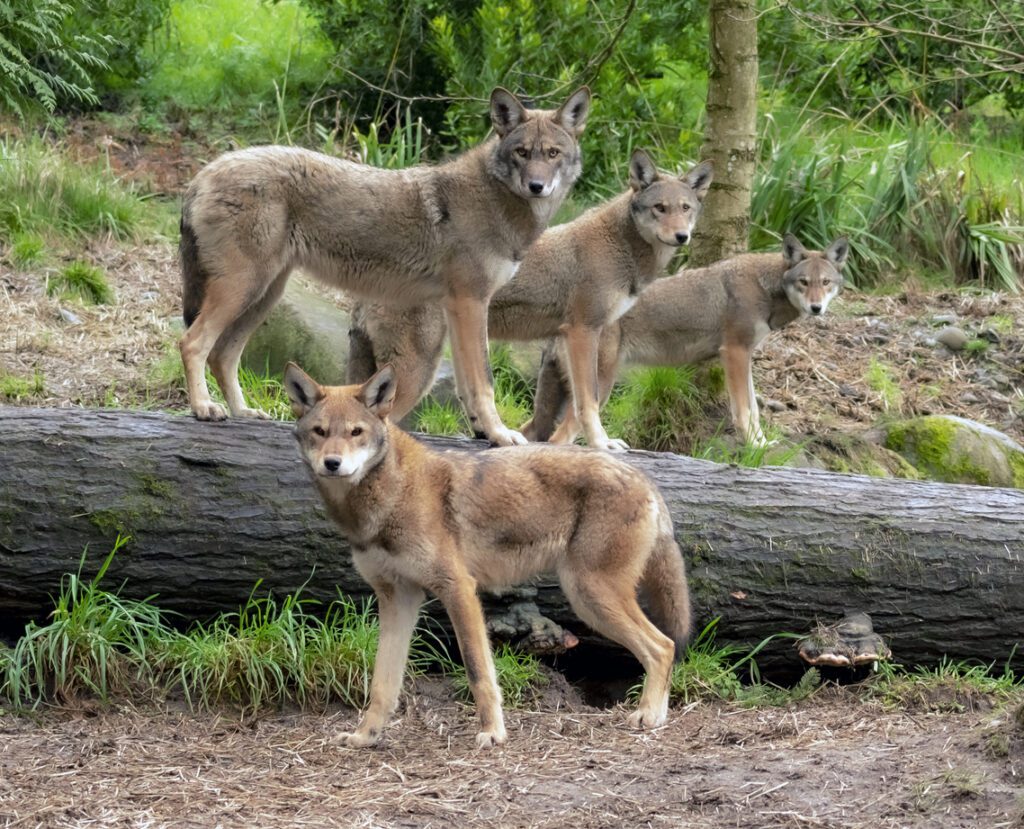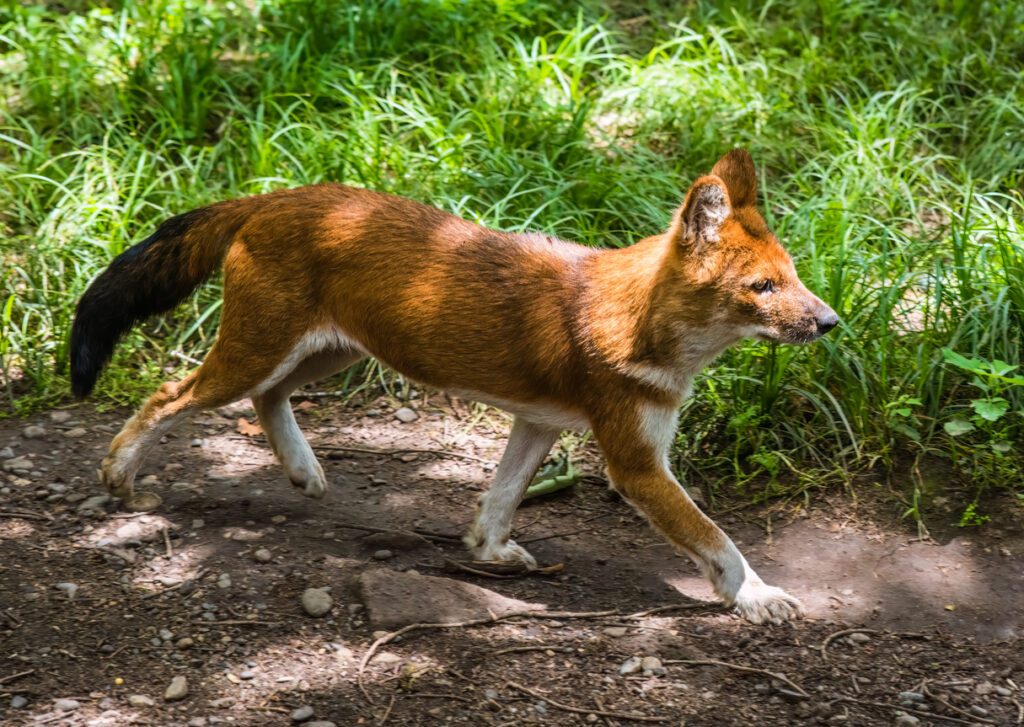When was the last time you heard about red wolves? These incredible creatures once roamed the southeastern United States, thriving as an essential part of the region’s ecosystem. Fast forward to today, and their story has taken a heartbreaking turn. Red wolves are now critically endangered, with only a handful left in the wild.
The other day, I came across a reel from the Wolf Conservation Center (WCC) about the birth of some red wolf pups. It was both a moment of hope and a stark reminder of how fragile their existence has become. Did you know the red wolf is one of the world’s most endangered canids? Watching those pups felt like witnessing a small miracle, a spark of life for a population teetering on the brink.
What happened to these majestic animals that once called the Southeastern U.S. their home? Why are they struggling to survive? And most importantly, what can we do to help? Join me as I explore the story of the red wolf, a tale of resilience, heartbreak, and hope for a brighter future.

The red wolf symbolizes resilience and fortitude native to the southeastern United States. Yet, this remarkable species faces the heartbreaking reality of being critically endangered. Let’s take a closer look at their lives, challenges, and the incredible efforts being made to ensure they don’t fade into extinction.
Fascinating Facts About Red Wolves
- A Southeastern Legacy
The red wolf calls forests, coastal prairies, and swamps across the southeastern United States its home. These ecosystems provide a unique blend of shelter, prey, and survival opportunities.
- Small but Mighty
Red wolves are more petite and slender than their gray wolf cousins, which allows them to adapt perfectly to their environments. At dawn and dusk, they hunt small mammals and birds with agile precision, showcasing their unique hunting skills.
- Survival Status
Decades of habitat loss and hunting have brought the red wolf to the brink of extinction. Their situation is dire, with fewer than two dozen estimated to exist in the wild today. This critical moment demands immediate and collective action from all of us, as the survival of this species rests entirely in our hands. The urgency of this situation should inspire us to act now before it’s too late.
A Closer Look at Their Habitat
Imagine a landscape where expansive swamps meet lush forests, and coastal prairies stretch toward the horizon. This is the breathtaking, unique habitat where the red wolf thrives, a truly awe-inspiring sight worth preserving for generations. The beauty of their habitat is a testament to the wonders of nature, and it’s our responsibility to ensure it remains intact.
- Privacy for Survival
Red wolves favor areas with minimal human interference to breed, hunt, and live peacefully. Forests shelter them from predators, while open spaces provide opportunities to hunt their prey.
- Blessed by Water
Rivers and wetlands dot their environment, serving as lifelines for these majestic creatures.
The Fight to Save Red Wolves
The survival of the red wolf rests entirely in our hands, and conservationists are stepping up to the challenge with determination and creativity. Here’s how they’re leading the way to recovery, such as establishing the Red Wolf Recovery Program in North Carolina, which focuses on breeding and releasing red wolves into the wild, and the efforts of the Red Wolf Coalition in advocating for red wolf conservation.
- Breeding Hope
Captive breeding programs have gained ground, ensuring the red wolf population has a fighting chance.
- Bringing Them Home
Reintroduction programs focus on restoring red wolves to protected wild spaces where they can thrive under close monitoring. One such effort involves Colossal Biosciences attempting to prevent their extinction through innovative conservation techniques.
- Restoring Their Habitat
Conservation groups are working tirelessly to give red wolves the homes they deserve, from restoring damaged ecosystems to creating safe havens. Restoring their natural habitats provides a secure environment for red wolves and preserves the ecosystem’s delicate balance.
- Empowering Communities
Collaborations with local communities spread awareness while gaining support for long-lasting preservation efforts. Every person who learns about or advocates for red wolves plays a vital part in their survival.
- Unlocking Genetic Mysteries
Genetic research is crucial in ensuring that red wolves maintain healthy diversity, which is vital for their future as a species. It’s a beacon of hope in their conservation journey, promising these majestic creatures a brighter and more secure future and inspiring us all to continue our efforts. The potential of genetic research to secure the red wolf’s future should give us hope and motivate us to support these initiatives.
Why Conservation Matters
For me, the story of the red wolf is deeply personal. It’s about more than saving a species; it’s about teaching others to care and to connect. When species like the red wolf vanish, we lose a piece of our natural identity. Protecting them means preserving the intricate balance of life on this planet, a balance we all rely on. The extinction of red wolves could disrupt the ecosystem’s delicate balance, affecting other species and even human life. For instance, the absence of red wolves could lead to an overpopulation of their prey, disrupting the balance of the ecosystem.
The Role We Can All Play
Every small effort has the power to make a difference. Whether you donate to conservation initiatives, advocate for habitat preservation, or spread the word about red wolves, your voice matters. You can also volunteer at local conservation organizations, participate in fundraising events, or join advocacy groups to support red wolf conservation.
Together, we can ensure that the haunting calls of red wolves echo through forests and swamps for generations to come. After all, isn’t life just a little more magical with creatures like the red wolf?
References:
Wikipedia. Red Wolf. https://en.wikipedia.org/wiki/Red_wolf
Thank you for reading this blog post. If you have any questions or comments, please leave them in the Comments section below.
Copyright © 2019. I Don’t Know All The Answers, Nikki Mastro.
All of my photographs and documents are Copyrighted.
The two photos included in this blog post are from the iStock.com library.
No part of this website, including text, photographs, and documents, may be reproduced, stored in a retrieval system, or transmitted in any form or by any means without written permission from the copyright holder. All unauthorized use is strictly prohibited. If you choose to copy or share any information from my site, you must provide a link to the source. I appreciate your cooperation.
For further information concerning “I Don’t Know All The Answers.”
– Website and Blog: https://www.idontknowalltheanswers.com
– Facebook: https://www.facebook.com/Nikki.L.Mastro/
– Instagram: https://www.instagram.com/i_dont_know_all_the_answers/
– Linkedin: https://www.linkedin.com/in/nikki-mastro-05455a3a/
– Youtube Channel: https://www.youtube.com/@idontknowalltheanswers1954

